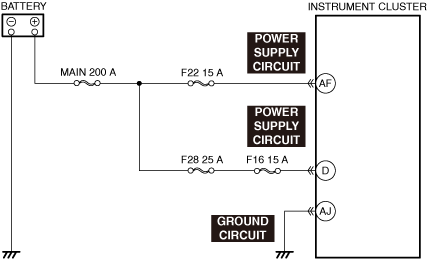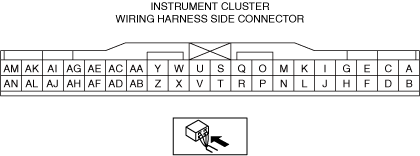Troubleshooting item
Any of the following lights stay on: (ABS warning light, TCS/DSC indicator light and/or DSC OFF indicator light)
Possible cause
• No connection at electronically controlled brake unit connector (When electronically controlled brake unit connector comes off, ABS warning light, brake system warning light, TCS/DSC indicator light, and DSC OFF indicator light illuminate.)
• Electronically controlled brake unit detected malfunction. (Input and output device malfunction)
• Electronically controlled brake unit detects low voltage in power supply.
• Electronically controlled brake unit ground malfunction (When electronically controlled brake unit ground is not securely connected, ABS warning light, brake system warning light, TCS/DSC indicator light, and DSC OFF indicator light illuminate but diagnostic trouble code does not display.)
• Electronically controlled brake unit does not operate.
• PCM detected malfunction.
• Body control module (BCM) detected malfunction.
• Error signal input from PCM
• Communication error between electronically controlled brake unit and PCM
• Communication error between electronically controlled brake unit and EPS control module
• After replacing SAS control module low-G sensor and yaw rate sensor initialization have not been performed.
• Communication error between electronically controlled brake unit and body control module (BCM)
• Communication error between electronically controlled brake unit and TCM (ATX)
• Communication error between electronically controlled brake unit and SAS control module
• Communication error between body control module (BCM) and instrument cluster
• After replacing electronically controlled brake unit brake fluid pressure sensor initialization has not been performed.
• Non-completion of module configuration (When module configuration does not carried out, after replacing electronically controlled brake unit, ABS warning light will stay on.)
• Electronically controlled brake unit internal malfunction

